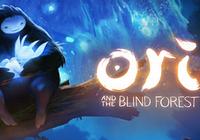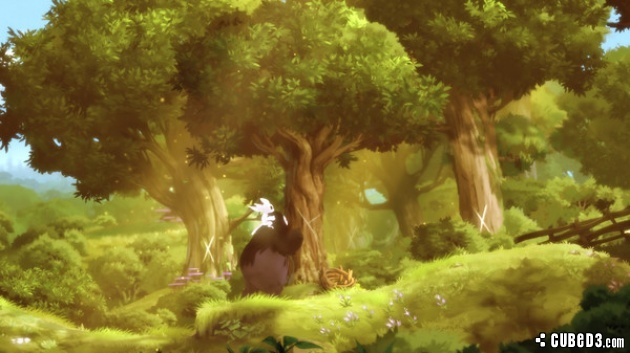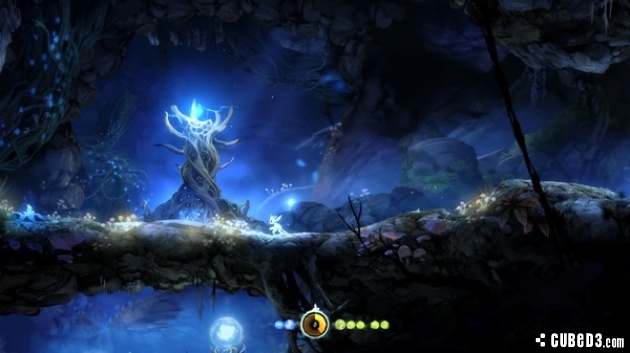Ori and the Blind Forest (PC) Review
By Jordan Hurst  19.06.2015
19.06.2015

Microsoft's hostility toward indie developers (sequestering games without a publisher in a poorly advertised section of the Xbox 360 marketplace and shunning them altogether on Xbox One) is baffling. Not just because indie games are more important than ever these days, but because Microsoft itself has been met with nothing but success whenever it personally invites a game onto its platforms by publishing it. Arbitrary as its policies may be, the company's publishing arm has given a home to several excellent smaller titles, including ilomilo, Mark of the Ninja, and BattleBlock Theater. Now, with Ori and the Blind Forest, it's released its finest game to date, and it's one that a lot of larger publishers never would have touched.
Ori and the Blind Forest is like a classic Disney film experienced as a sleek and polished Metroidvania. The gameplay is fast and intense, the story is simple but affecting, and the art is positively stunning. With lush details, expressive animation, and a constant stream of visual novelty, it's tempting to call it the most beautiful 2D game ever created. Astonishingly, the game succeeds where most extravagantly illustrated games fail: its flourishes and excesses almost never get in the way of gameplay. Platforms are always distinguished from background, important objects and locations never feel diluted, and threats are usually obvious ("usually" because every power-up and projectile is a somewhat interchangeable ball of light).
It's common to see reviews that prefix the words "living" and "breathing" onto descriptions of large, realistic game worlds, but with Ori and the Blind Forest, the description is literal. The constant motions of the world, both grand and subtle, feel like the breath of some enormous magical entity. Considering the setting is a sprawling forest fostered by a mystical Spirit Tree, the feeling is unbelievably appropriate. Of course, audio is also a huge component of atmosphere, and the game follows through on that front, too. The ambient sounds of wildlife and wind are great at setting the scene, and the characters' animalistic cries convey plenty of emotion. The soundtrack is amazing, as well. Unlike many orchestral ensembles, it remembers to always include a strong melody in its compositions, and expertly swings between moody and uplifting pieces whenever the situation calls for it.

The beauty of Ori and the Blind Forest is not just aesthetic; the game is also a marvel of design and technical prowess. On the technical side, the game's controls are practically flawless. Games with controls that could be called perfect (i.e. they do exactly what they're told, right when they're told) are few and far between, but Ori and the Blind Forest is probably the closest any game has come to that description since Super Meat Boy. In fact, it's likely that Super Meat Boy directly influenced Ori and the Blind Forest, because the physics of the two games are nearly identical. Both games feature surprisingly intuitive wall-jump controls, incredibly flexible jump height, and the responsiveness required for successfully prioritising player agility. Having a protagonist - in this case, a glowing fox-like creature named Ori - so miniscule that any hit detection flaws are imperceptible also helps.
Most impressively, the game even manages to make its most unorthodox mechanic - the ability to launch Ori off of projectiles and enemies at any angle - feel completely natural after only a few seconds, thanks to a generous effective radius. Good thing, too, because the mechanic forms the backbone of the game's entire midsection. In a lesser game, that would signal the point at which boredom is most likely to set in, but in Ori and the Blind Forest, it ends up being a testament to the mechanic's versatility. What begins as just another method of getting from place to place evolves into an indispensable tool for puzzle-solving, exploration, and combat, as it can be used to redirect enemy projectiles into destructible walls and otherwise invincible opponents. The fact that it's great fun to use on top of all this wonderful design is almost too good to be true.

While this ability is certainly the game's most interesting and robust feature, nothing seems to have been sacrificed in order to make room for it. In fact, every ability at the player's disposal is given ample space to demonstrate its full potential. It's incredible how consistently fresh the developers were able to keep the game's obstacles, considering most of the unlockable power-ups are just alternate methods of vertical traversal, including wall jumping, double jumping, and super jumping. Ingeniously, most obstacles the game introduces will negate certain abilities solely through level design, forcing players to master specific techniques in order to progress. When this can't be done, the game introduces a temporary mechanic, such as an orb that freezes burning platforms and alters gravity at the cost of jump strength. These temporary mechanics could have easily felt gimmicky, but they always stick around long enough to feel like they actually belong.
A growing trend among platformers is the introduction of features that soften the blow of difficult gameplay. While that sounds like a euphemism for "features that appeal to casual gamers," in practice, it allows the developers to make their game as challenging as they want without worrying about losing their audience. For New Super Mario Bros. Wii, this feature was 4-player co-op. For Super Meat Boy, it was instant respawns and short levels. For Ori and the Blind Forest, it's instant respawns and the ability to create save points at will. Yes, that's essentially just a quicksave button, but because it's tied to the player's energy level and can't be used in unsafe areas, there's a bit of strategy to it, and it's fairly well-protected against abuse.

Ori and the Blind Forest is very good at exhibiting the best of both worlds whenever an aspect of game development can be divided into a dichotomy. Case in point: it manages to keep the general actions that players are likely to repeat multiple times (combat, jumping puzzles, exploration) enjoyable, while punctuating them with one-of-a-kind moments that will remain memorable years after they've played out. A ghostly mid-game area that shifts its layout whenever Ori's back is turned is a fine example of one of these moments. The finest example, however, comes with the first "boss" encounter: a mad dash through the innards of a colossal tree as it steadily floods, which will undoubtedly be remembered as one of the best escape sequences ever created.

The one area where Ori and the Blind Forest will not manage to satisfy all players is narrative. The game is a superb storyteller, but its story isn't particularly worth telling. It's essentially an antique fable: Ori, a child of the Spirit Tree, is separated from its parent during a thunderstorm, whereupon he is raised by the forest creature Naru. Sometime later, a giant black owl named Kuro attacks the Spirit Tree and severs its core, a sapient being named Sein, withering the surrounding forest and generally causing chaos. The resulting famine kills Naru, leaving Ori alone until he meets Sein, and together they set out to restore the Spirit Tree to health. However, the story's problem is neither its simplicity nor its triteness. The problem is its inability to stick to any kind of logic.
For one thing, resurrection is established as an aspect of the setting pretty quickly, with Ori himself dying at the end of the prologue only to be immediately revived for some ill-explained reason. The mechanics and limitations of this are never addressed, and it's a good example of what not to include in a story with minimal dialogue. The relationship between Kuro and the Spirit Tree is also completely nonsensical, in a way that can't really be explained without spoilers. It quickly becomes clear that the story is mainly a setup for a handful of brilliantly poignant moments. Every character demonstrates relatable motivations and emotions, despite all of them being animals or forces of nature, which makes the designated heart-wrenching scenes incredibly effective. Naru's early death will probably become an emotional touchstone for any young players ten years down the line, and the game still has three or four equally moving segments in store.

Cubed3 Rating
Exceptional - Gold Award

Ori and the Blind Forest can easily thaw the heart of even the most cynical players. Those expecting only a colourful, attractive platformer will be caught completely off-guard by its marvellously deep gameplay and frank, occasionally tragic narrative. Moon Studios has crafted an uncommonly universal experience - one that provides immediate gratification for anyone that picks it up (or even just looks at it), while still hiding plenty of nuance for those who want to delve further. Games with outstanding aesthetics always run the risk of falling victim to the old "style over substance" criticism, but Ori and the Blind Forest supports its style with a constant stream of timeless, captivating substance.

![]() 9/10
9/10
![]() 0
(0 Votes)
0
(0 Votes)
 Out now
Out now  Out now
Out now  Out now
Out now  Out now
Out now Comments
Comments are currently disabled

 Sign In
Sign In Game Details
Game Details Subscribe to this topic
Subscribe to this topic Features
Features





 Top
Top

